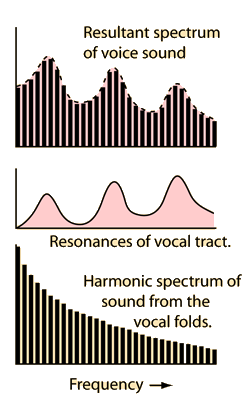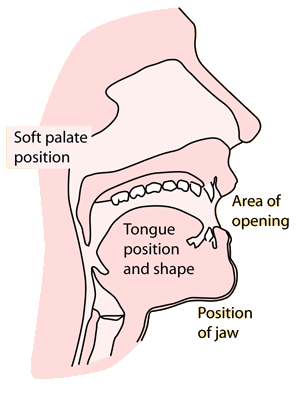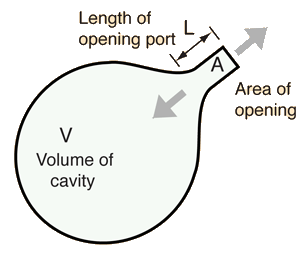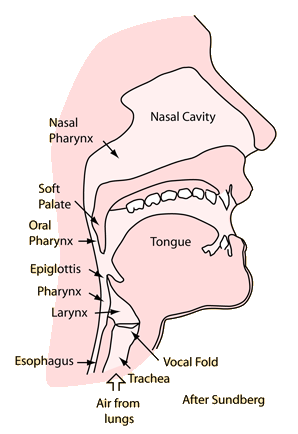Vocal Tract Resonance
|
Sundberg models the vocal tract as a closed tube resonator, suggesting that the three prominent formants seen in vowel sounds correspond to the harmonics 1,3,5. These frequencies are then modified by the cavity resonance of the vocal tract as influenced by the articulators.  |
 |
A typical length for the vocal tract is about 17-18 cm. This would give a fundamental frequency of about 500 Hz if it is treated as a closed cylinder. This would predict formant frequencies of 500, 1500 and 2500, which is in the range of observed frequencies. However, the articulators which provide differences in vowel sounds produce significant changes in these formant frequencies.
Voice concepts
Musical instruments
Reference
Sundberg
Scientific American, March 77
| HyperPhysics***** Sound | R Nave |


